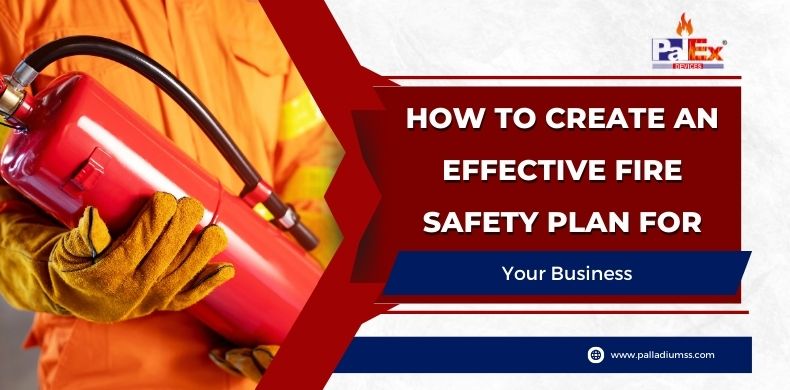A fire in your business setting can truly cause severe damage, disrupt operations and put lives at risk. Effective fire safety plan ensures that your employees know how to prevent fires, how to respond in case of emergency and how to evacuate safely. In this guide you can learn everything about how to create an effective fire safety plan for your business.
Why every business needs a fire safety plan
A well designed fire safety plan goes way beyond just a legal requirement; it’s a very important part of your workplace safety. A safety plan ensures that your employees, customers and visitors can evacuate safely. It reduces the spread of fire and limited financial loss. You must know that a fire safety plan helps you meet local fire codes and regulations. It protects your business owners from legal issues if a fire occurs. It trains the staff on fire prevention and emergency response.
some of the main elements of a fire safety plan
a fire safety plan should always be clear, practical and tailored to your businesses specific requirements. It must include identifying potential hazards in the workplace. You must evaluate the risks in different areas of business and implement safety measures to reduce fire hazards. Proper storage of flammable materials and safe burning of electrical equipment. You should regularly maintain the heating and Kitchen appliances. There should be procedures for reporting fires and steps to contain small fires using extinguishers. Clear evacuation procedures for all employees. You must train your staff on fire prevention and fire extinguisher. Conduct fire drills and other elements to test preparedness. You should assign fire wardens to guide your employees during evacuations.
It’s very important for you to install and maintain fire alarms and smoke detectors. Ensuring fire extinguishers are accessible and in working condition. You should keep emergency exits clear and properly marked.
Conduct a fire risk assessment
A fire risk assessment helps to identify potential fire hazards in your business and take the steps to reduce the same. You need to look for flammable materials and check for faulty electrical wiring or overload circuits. It is vital for you to evaluate the fire risks in different areas as office cases as a risk of electrical fires from computers and wiring. Kitchens have a risk of grease fires and gas leaks. Warehouses have a risk of fire spreading quickly due to stored materials. You should completely remove unnecessary flammable materials and upgrade old wiring and appliances and train employees on safety equipment use.
Implement fire prevention measures
You need to schedule regular electrical inspections and avoid overloading circuits and using damaged fi wire. Train employees to report electrical issues immediately. Store flammable items and other elements in fire resistant cabinets. Always keep storage areas cool and well ventilated and dispose of flammable waste properly.
You should maintain heaters and kitchen appliances regularly and clean the grease buildup in exhaust hoods.
Develop an emergency response plan
You must know that an emergency response plan ensures everyone knows what to do if a fire occurs. If you see a fire activate the fire alarm immediately and call emergency services and provide your location. It is very important for you to use a fire extinguisher to put out small fires. If the fire spreads quickly, do not attempt to fight it. Follow the designated evacuation routes and assist disabled or injured people. You should always gather at the assigned meeting point outside and perform a head count to ensure that no one is left behind. Always wait for emergency responders to arrive. Post fire evacuation maps throughout the workplace to help employees find the safest exit.
Employee training and fire drills
Training employees on fire safety saves lives in an emergency. You need to ensure that your employees know how to recognize the fire hazard and prevent workplace fires. Evacuation procedures and emergency exits Are a must. You should schedule fire drills at least twice a year and use a different fire scenario for each drill while evaluating employee response time and making improvements.
Maintain fire safety equipment
Fire safety equipment must be functional at all times to be effective. Fire alarms and smoke detectors should be tested monthly. Fire extinguishers must be inspected and recharged regularly. Sprinkler systems you must need professional maintenance.
So above all you need to know that creating an effective safety plan protects lives, property and business operations. By following all the steps you can truly minimize the fire risks and train your employees for emergencies and ensure compliance with fire safety regulations.



